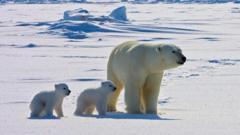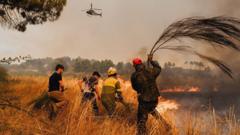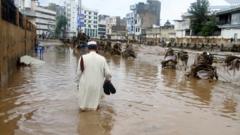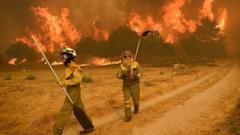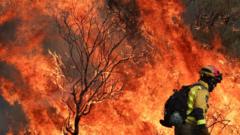The study involved an analysis of blood samples collected during two separate time periods: one set gathered between 1987 and 1994, and the other between 2008 and 2017. The findings showed that the more recent samples exhibited increased levels of antibodies indicating exposure to five different pathogens. Wildlife biologist Dr. Karyn Rode from the US Geological Survey emphasized the significance of these results, stating that they reflect larger shifts happening within the Arctic ecosystem.
In total, the researchers assessed six unique pathogens, which are traditionally associated with land animals but were now being detected in the polar bear population. As Dr. Rode pointed out, the research coincides with a substantial loss of sea ice and increased land usage by polar bears, which has led to greater interaction with these land-oriented pathogens.
Among the pathogens identified as becoming more prevalent in polar bears were two parasites that lead to toxoplasmosis and neosporosis, along with bacteria responsible for rabbit fever and brucellosis, and the virus causing canine distemper. While polar bears typically exhibit resilience to diseases, the findings underscore that significant environmental changes are taking place.
Polar bears, which are currently classified as vulnerable to extinction, face a multitude of threats, chiefly stemming from climate change and habitat loss. With only around 26,000 individuals remaining globally, primarily found in Canada, the survival of this species hangs in the balance. The ongoing retreat of sea ice is leading to challenges in food acquisition, forcing polar bears to remain on land longer and increasing their exposure to new pathogens through altered hunting patterns.
Previous studies utilizing collar cameras have documented these bears' dietary habits during ice-free summers and revealed surprising interactions. The continuing loss of their ice habitat remains the most pressing danger to the future of polar bears and other Arctic wildlife. The results of this research have been published in the scientific journal PLOS One, shedding critical light on the implications of climate change for these iconic animals.
In total, the researchers assessed six unique pathogens, which are traditionally associated with land animals but were now being detected in the polar bear population. As Dr. Rode pointed out, the research coincides with a substantial loss of sea ice and increased land usage by polar bears, which has led to greater interaction with these land-oriented pathogens.
Among the pathogens identified as becoming more prevalent in polar bears were two parasites that lead to toxoplasmosis and neosporosis, along with bacteria responsible for rabbit fever and brucellosis, and the virus causing canine distemper. While polar bears typically exhibit resilience to diseases, the findings underscore that significant environmental changes are taking place.
Polar bears, which are currently classified as vulnerable to extinction, face a multitude of threats, chiefly stemming from climate change and habitat loss. With only around 26,000 individuals remaining globally, primarily found in Canada, the survival of this species hangs in the balance. The ongoing retreat of sea ice is leading to challenges in food acquisition, forcing polar bears to remain on land longer and increasing their exposure to new pathogens through altered hunting patterns.
Previous studies utilizing collar cameras have documented these bears' dietary habits during ice-free summers and revealed surprising interactions. The continuing loss of their ice habitat remains the most pressing danger to the future of polar bears and other Arctic wildlife. The results of this research have been published in the scientific journal PLOS One, shedding critical light on the implications of climate change for these iconic animals.

